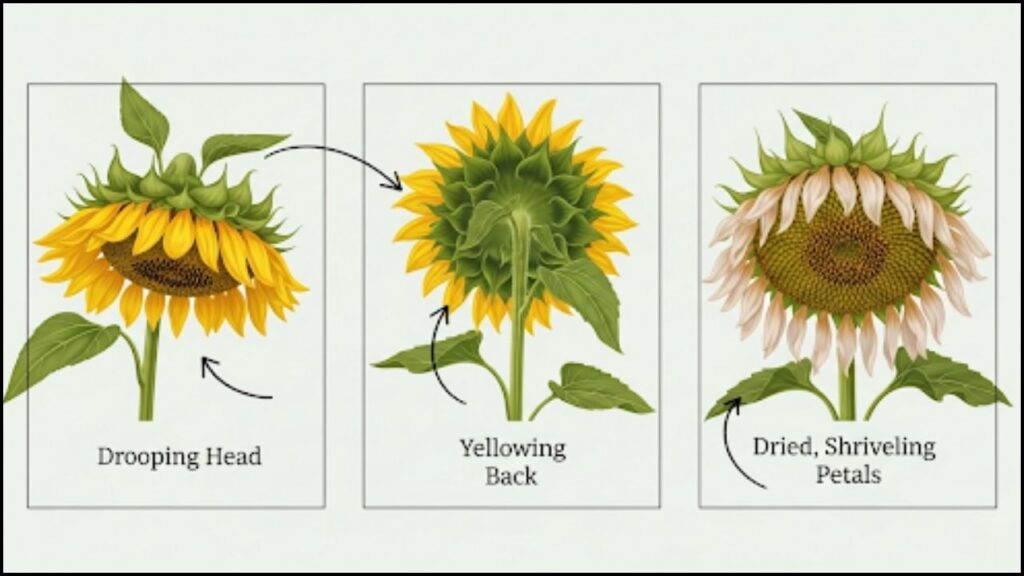As summer fades, gardeners and homesteaders face the rewarding task of harvesting their crops. For those with sunflowers, knowing the precise time and method to harvest sunflower seeds is crucial for ensuring a bountiful supply for snacks, future planting, or bird feed. This process, while simple, requires careful observation and timing to maximize yield and quality.

Key Steps for Harvesting Sunflower Seeds
| Key Step | Detail |
| 1. Identify Readiness | Head droops, back turns from green to yellow-brown, and petals are dry. |
| 2. Protect From Wildlife | Cover the head with cheesecloth or a paper bag once petals start to dry. |
| 3. Cut the Head | Leave about one to two feet of stem attached to the head for handling. |
| 4. Dry the Head | Hang in a warm, dry, well-ventilated area for one to four weeks. |
Determining the Right Time to Harvest
The most critical factor in a successful sunflower harvest is timing. Harvesting too early results in underdeveloped seeds with little nutritional value, while waiting too long risks losing the crop to birds, squirrels, or mold. “The plant itself gives you all the visual cues you need,” said Dr. Eleanor Vance, a botanist specializing in crop science. “Gardeners should resist the urge to cut the head as soon as the petals fade. The real work is happening inside the head as the seeds mature and fill out.”
According to guidance from the University of Minnesota Extension, there are three primary indicators that a sunflower head is ready for harvest:
- The Head Droops: The weight of the maturing seeds will cause the large flower head to bend and face the ground.
- The Back of the Head Turns Yellow: The vibrant green back of the sunflower head will transition to a pale yellow or brownish color.
- The Petals Dry and Fall Off: The small florets in the center of the head will shrivel, and the large outer petals will become dry and begin to fall away easily.
Protecting Your Crop from Wildlife

A common challenge is protecting the maturing seeds from birds and other wildlife. Once the seeds begin to develop, covering the head is an effective strategy. Experts at The Old Farmer’s Almanac recommend using a light, breathable material like cheesecloth, a mesh produce bag, or even a large paper bag secured around the head with twine. This allows air to circulate, preventing mold, while creating a physical barrier.
The Process: How to Harvest and Dry Sunflower Heads
Once the sunflower head is mature, the harvesting process is straightforward. Using sharp pruning shears or a saw, cut the head from the stalk, leaving about one to two feet of stem attached. This stem acts as a convenient handle for hanging the head to dry.
How to Dry Sunflower Heads for Optimal Seed Quality
Proper drying is essential to prevent mold and ensure the seeds are easy to remove. The PennState Extension advises hanging the harvested heads in a warm, dry, and well-ventilated location away from direct sunlight, such as a garage, shed, or attic.
“Air circulation is your best friend during the drying phase,” Dr. Vance noted. “You want to hang the heads individually, ensuring they aren’t touching, to allow for even drying. This process can take anywhere from one to four weeks, depending on the humidity and size of the head.” The head is fully dry when the back is stiff and brown, and the seeds feel loose in their sockets.
Extracting and Storing Your Seeds
Once the head is completely dry, removing the seeds is the final step. This can be done by rubbing your hands firmly over the face of the head, causing the seeds to dislodge. For larger quantities, rubbing two dried sunflower heads together is an efficient method. Alternatively, a stiff brush or a fork can be used to scrape the seeds out into a bucket or onto a clean tarp.
After extraction, it is important to separate the seeds from any remaining plant debris, known as chaff.
Saving Sunflower Seeds for Different Purposes
How you store the seeds depends on their intended use.
- For Snacking: To prepare seeds for roasting, rinse them in a colander to remove any dirt or chaff. A common method, outlined by the National Sunflower Association, is to soak the seeds overnight in a salt brine (1/4 to 1/2 cup of salt per two quarts of water). After soaking, pat them dry and roast at 300°F (150°C) for 30-40 minutes, or until golden brown. Store roasted seeds in an airtight container.
- For Replanting: Select the largest, plumpest seeds for saving. Ensure they are completely dry before storing to prevent mold. According to the Cornell Cooperative Extension, seeds for planting should be stored in a cool, dark, and dry place. A labeled paper envelope or a glass jar in a refrigerator is ideal. Properly stored, sunflower seeds can remain viable for several years.
- For Bird Feed: Raw, unseasoned sunflower seeds are a high-energy food source for many bird species. Store these seeds in a cool, dry place in a container that protects them from rodents. A sealed metal or thick plastic bin works well.
The practice of saving sunflower seeds not only provides a rewarding harvest but also contributes to garden sustainability. By replanting seeds from your own crop, you can cultivate varieties that are well-adapted to your specific local climate and soil conditions, continuing a cycle of growth year after year.
How to Harvest Parsley: A Guide to Maximizing Flavor and Yield
